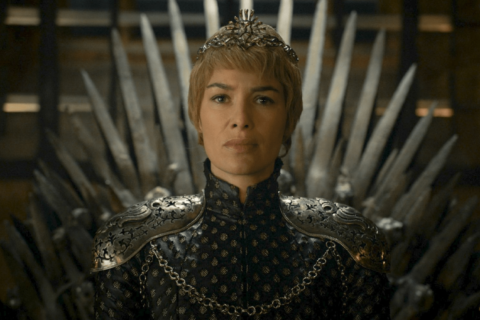This is Why Your Favourite Female Villains Have Blonde Hair
Hair colour means nothing—it’s a genetic lottery that uses pigment (or whatever causes hair to be different colours…SCIENCE!). But that doesn’t mean it isn’t tied to a whole lot of senseless symbolism.
A piece of our selves is tied up on the top of our heads along with our topknots, whether we like it or not (and whether our hair is long enough for a messy bun, or not). There are archetypes, stereotypes, prototypes…all kinds of types that try to use our hair (amongst other things) to define who we are. A lot of these misconceptions come from media, with the representations we see on screens informing our identities. You’re either a Rachel or a Monica; a Samantha or a Charlotte; a Betty or a Veronica. You might be neither, but you definitely can’t be both.
As a blonde, I tend to take notice of other blondes. Which I think is okay: we always relate more to people who look like us. And so, as I finished binging season 5 of House of Cards and began gearing up for the July 16th return of Game of Thrones (read: re-watching episodes 9 and 10 of the previous 6 seasons), I made an interesting observation: my two favourite female villains both have blonde hair. Claire Underwood and Cersei Lannister are, without argument, two of the most manipulative, ruthless, power-hungry monsters on television.
But aren’t blondes supposed to be sweet, superficial and really really fun? Aren’t we supposed to be labelled as the ditzy girl next door? Or the popular girl with an attitude problem? Well, it turns out, blondies are ice-cold bitches too. Like, ya know, totally ice-cold.
The stereotype doesn’t just exist in political dramas and epic medieval fantasies. Think about it: Sue Sylvester on Glee, Constance Langdon on American Horror Story, Petra Andel on Jane the Virgin, Amanda Woodward on Melrose Place, Skyler White on Breaking Bad—these are women we love to hate, or hate ourselves for loving. It breaks my heart to say it, but as GoT’s Daenerys Targaryen kill count rises, even she is becoming a villain.
So what’s the deal Hollywood? Why are TV’s anti-heroes so often given blonde locks? What happened to the age of Lizzie McGuire, Veronica Mars, and Buffy the Vampire Slayer? When, precisely, did blondes break bad?
In her book, On Blondes, Joanna Pitman explains why blonde women are so often depicted as cutthroat characters. It dates back to Ancient Greece, when Aphrodite, goddess of love, was best known for her golden hair. Fast-forward to the Middle Ages, and men are suspicious of all things relating to women and sex. Blonde hair equals Aphrodite, Aphrodite equals sex, and sex equals evil.
There’s some biblical stuff in there too (because of course there is.) Eve is often illustrated with fair, flowing locks, which apparently makes all blonde women—and pretty much every women—a temptress. Angels are typically depicted with light hair as well, which further feeds into the two-faced nature of blondes. We look celestial, but we can’t be angels and Aphrodite at the same time.
Let’s take a second to unpack all of this. These examples—Aphrodite, Eve, All-The-Angels-In Heaven—are commonly cited reasons for why blonde is historically characteristic of beauty and purity. The Blonde is Evil trope is meant to present a twist: Aren’t they even more evil when they are blondes! Blondes are supposed to be pure! And purity is best!
This theory spills over into the real world too. Research has found that female CEOs and senators are disproportionately blonde in the United States. Why? “If the package is feminine, disarming and childlike,” researcher Jennifer Berdahl told The Huffington Post. “You can get away with more assertive, independent and [stereotypically] masculine behaviour.”
Even when we portray blondes as badass bitches, we’re still reinforcing the idea that blonde hair is the ideal. You’re either stereotypically the ideal (Rachel Green), or you’re a villain who still perpetuates the ideal stereotype (Regina George). Even when I hate the people who look like me, I’m propagating racist ideology that puts whiteness in a position of power. Because whether you’re a Lannister, an Underwood, or one of the good guys, you’re likely coming from a place of privilege if you have blonde hair. Privilege is, ultimately, the symbol that seems to stick on both sides of the battle of good blondes vs. evil blondes.
But how is that supposed to make me feel? How is it supposed to make my fellow blonde women feel? I recognize my privilege and that I’m fortunate to see so much of myself represented in popular culture, but that doesn’t discount my feelings about my representation. Right? I don’t want to be a ditsy blonde or a bitchy blonde; and I definitely don’t want to be a blonde who’s known only for her privilege, no matter which side of virtue spectrum she’s on.
Maybe I’m being selfish, and it’s too much to ask for a nuanced, morally ambivalent character with Taylor-Swift-blonde hair when ½ the women on TV already look like me. Or maybe, I just haven’t found the right show yet.








